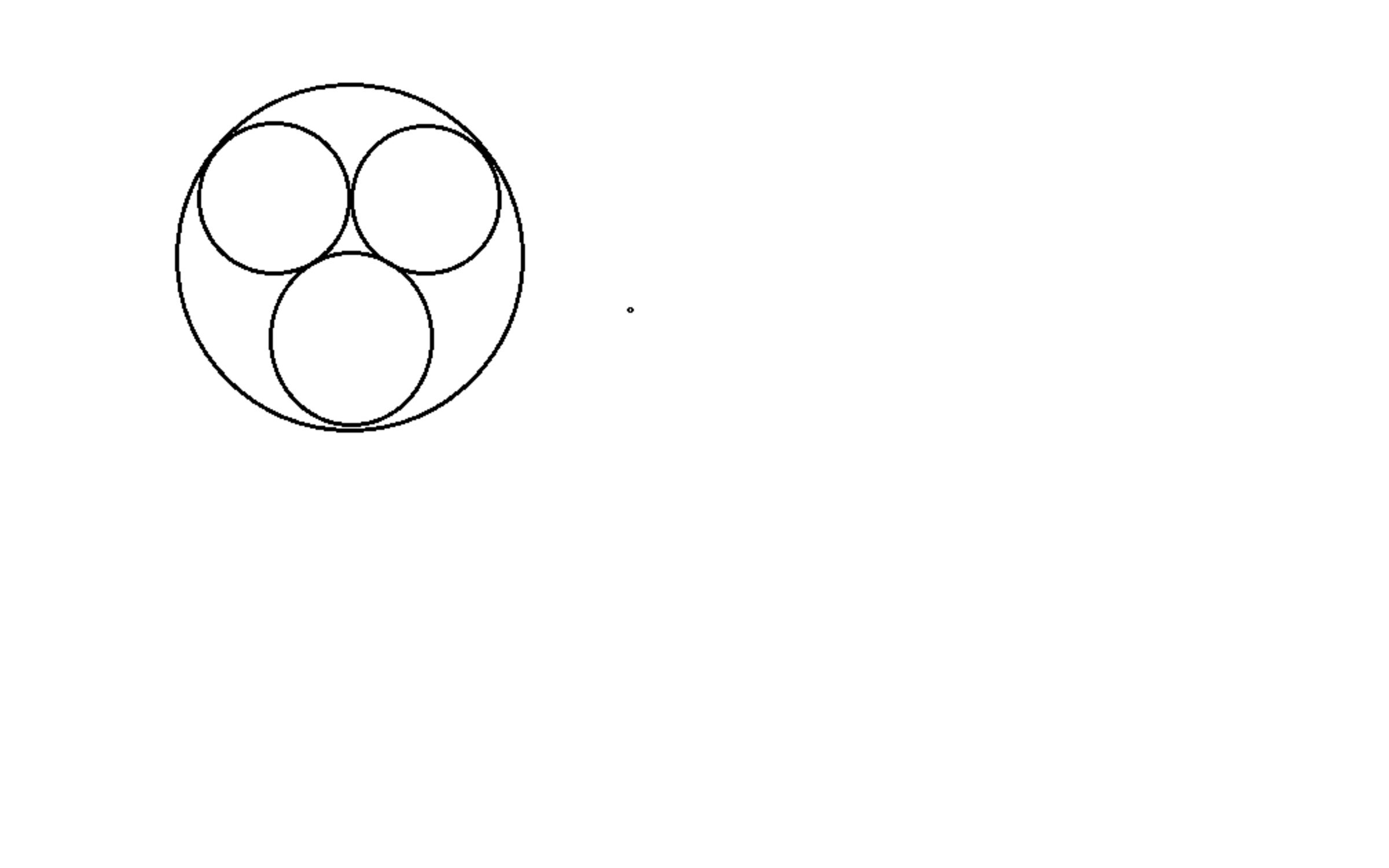A need this question to be solved urgently
three circles of radius 1 cm each are circumcentered by a circle of unknown radius.find the radius of bigger circle

No vote yet
1 vote
Easy Math Editor
This discussion board is a place to discuss our Daily Challenges and the math and science related to those challenges. Explanations are more than just a solution — they should explain the steps and thinking strategies that you used to obtain the solution. Comments should further the discussion of math and science.
When posting on Brilliant:
*italics*or_italics_**bold**or__bold__paragraph 1
paragraph 2
[example link](https://brilliant.org)> This is a quote# I indented these lines # 4 spaces, and now they show # up as a code block. print "hello world"\(...\)or\[...\]to ensure proper formatting.2 \times 32^{34}a_{i-1}\frac{2}{3}\sqrt{2}\sum_{i=1}^3\sin \theta\boxed{123}Comments
The general formula is R=sin(nπ)r[1+sin(nπ)] where r,R and n are the radius of the inner circle, radius of the outer circle and number of circles inscribed within the larger circle respecticely.
Substituting we get the radius of the outer circle ≈2.1547 cm. Try proving the formula of your own!
An other way using basic knowledge is like this: Join centres of small circle to obtain an equilateral triangle. Then simply find length of centroid using basic trigonometry or Pythagoras theorem. When that length is found add the radius of small circle to it. As the centroid of triangle is the center of bigger circle.